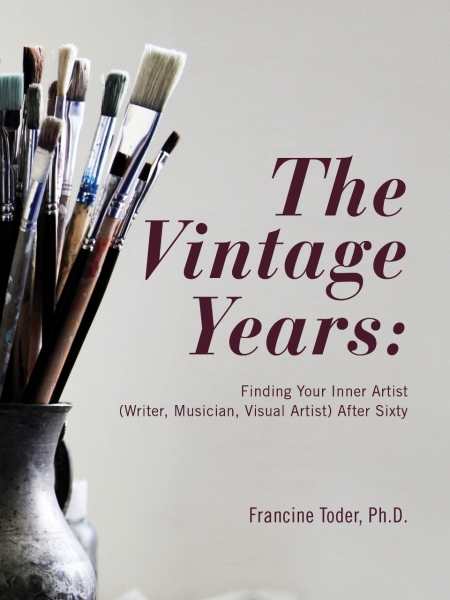
The Vintage Years
Finding Your Inner Artist (Writer, Musician, Visual Artist) after Sixty
“I once heard that most people die with music in their heart,” said cello teacher Biana Kovic. Wanting to do something about it, the young woman sought volunteers for a project she had in mind: to find out if older people could learn to play music. Her search led her to eighty-nine-year-old Matty Kahn who became her eager student and the subject of her award-winning documentary, Virtuoso—It’s Never Too Late for the Cello. Kahn’s inspiring story graces the beginning of psychologist Francine Toder’s The Vintage Years.
According to Toder, recent discoveries in neuroscience reveal that much of what has been believed about the aging brain has been incorrect. The truth is, given good health and a history of vigorous brain activity, there is “plentiful evidence that the older brain functions at least as well as the young or middle-aged brain in most ways except for speed of analyzing data.” Later life, she affirms, appears to be a particularly good time to begin the study of one of the arts, as the mature brain has shown itself to be even better than more youthful brains in areas like judgment and improved ability to focus. Toder also reveals that science’s recent ability to measure brain function in real time has demonstrated an increase in bilaterality that begins only at midlife, and it has also been noted that thoughts and feelings are better integrated in mature adults than they were at any previous life stage. Patterning is improved in the brains of older adults—allowing for greater creativity—as the mature brain draws upon a vast storehouse of experiences and combines them in ways that are unique and complex. Add to this list of strengths the fact that hormonal changes in later years result in increased patience and tolerance for frustration, and one finds that older adults have much in their favor when it comes to artistic endeavors.
But Toder’s book is not heavy on science; instead, it is a compilation of the engaging stories of more than twenty adults who took up the study of an art form between the ages of fifty-five to ninety-six and found in it deep pleasure and meaning. Some of them had begun to explore their art as children and had been dissuaded, some had never even considered it for themselves until a chance encounter with a cello, a painting, vibrant skeins of yarn, or a blank notebook just happened to fall into their lap at the same time that other, busier things left.
The book would have had more bite if it dealt with the harsh realities facing so many elder Americans today: how, when worried that their Social Security checks might not cover their needs, they might still find a way to express their latent creativity. But it remains an encouraging look at just how wrong the ideas about the aging brain have been and how joyful and life-affirming it can be to discover the artistry within—especially in the “vintage years.”
Francine Toder is emeritus faculty at California State University in Sacramento and a clinical psychologist recently retired from private practice. She has written two other books, and her writing has also appeared in many professional journals. She practices her cello daily.
Reviewed by
Kristine Morris
Disclosure: This article is not an endorsement, but a review. The publisher of this book provided free copies of the book to have their book reviewed by a professional reviewer. No fee was paid by the publisher for this review. Foreword Reviews only recommends books that we love. Foreword Magazine, Inc. is disclosing this in accordance with the Federal Trade Commission’s 16 CFR, Part 255.
